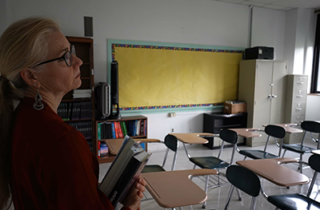According to data from the American Enterprise Institute and EdWeek Research Center, school districts across the country are reporting sharp and consistent increases in chronic absenteeism and behavior problems, both of which are negatively impacting academic achievement. While many districts believe these problems are a result of the pandemic, the fact remains these are serious problems that require real-time interventions to get students back on track.
Presented by Sarah Frazelle, M.A., Co-Director, National Student Attendance and Engagement Center, and Senior Researcher, AIR; Trudy Bender, Ed.S., NCSP, Senior Manager of Thought Leadership Content, Branching Minds; and Emily-Rose Barry, VP of Product, Branching Minds
During the edLeader Panel “Decreasing Absenteeism and Its Effects with Meaningful Strategies,” Brian Marques, Sr. Director of Opportunity Youth for Boston Public Schools (MA), Aspen Florence, Educational Consultant for the Utah State Board of Education, and Cecelia Leong, Vice President of Programs for Attendance Works, provided insights into leveraging Multi-Tiered Systems of Support (MTSS) and innovative approaches to understand and address chronic absenteeism and attendance barriers.
Presented by Brian Marques, Sr. Director of Opportunity Youth, Boston Public Schools (MA); Aspen Florence, Educational Consultant, Utah State Board of Education; Cecelia Leong, Vice President of Programs, Attendance Works; and Nicole DellaRocco, Senior Account Director, Panorama Education
Presented by Lori Jurjovec, Literacy Specialist, Heggerty
Presented by Dr. Tim Odegard, Murfree Chair of Excellence in Dyslexic Studies and Professor of Psychology, Middle Tennessee State University; Dr. Jennifer Zoski, Staff Learning Scientist, Amplify; and Dr. Deni Basaraba, Manager of Learning Science, Amplify
Early intervention: it’s a common mantra for any student with learning difficulties, including dyslexia. But as Terrie Noland, National Director of Educator Engagement for Learning Ally, pointed out in a recent edWebinar, those services are not consistently available to students across the United States. In “Dyslexia: Hidden Costs and Money-Saving Techniques for Districts,” Noland makes a case for front-loading the funding to shrink the learning gap at an earlier age and offers cost-effective solutions to help students engage in their education.






